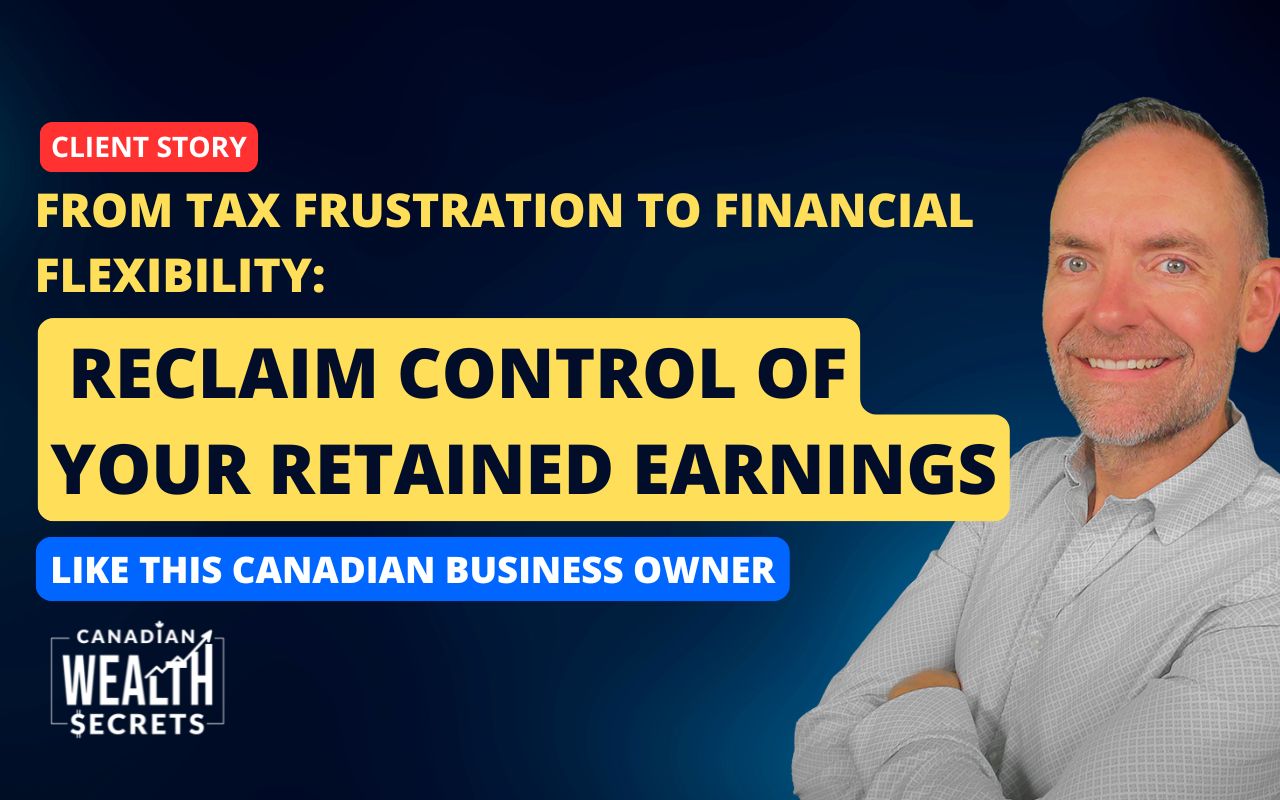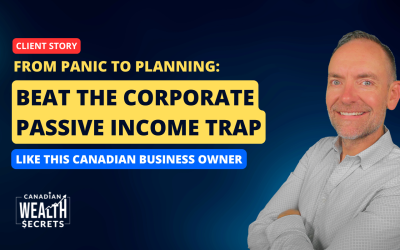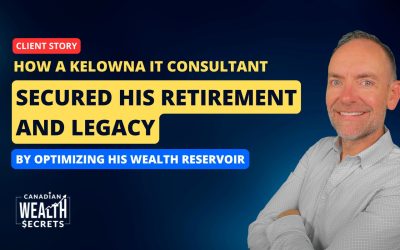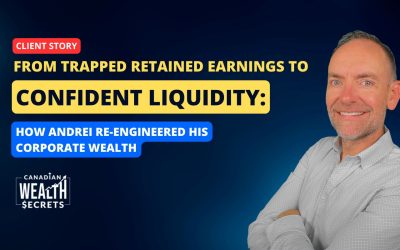Summary
- Mark, an Ontario entrepreneur, built a thriving business generating ~$750K net income annually.
- His holding company retained $300K–$400K per year, sitting mostly in cash and money market funds.
- He wanted to avoid tax erosion, maintain liquidity, and prepare for a gradual semi-retirement.
- After exploring options, he adopted a corporate-owned whole life insurance strategy.
- The policy provides early cash value, growth aligned with interest rates, and the ability to borrow against it for opportunities.
- Outcome: Mark converted idle retained earnings into a flexible pool of capital, positioned for both short-term investing and long-term estate planning.
Instead of watching cash pile up inside his corporation, Mark found a way to unlock liquidity, reduce tax drag, and build lasting security for his family.
Mark had built something remarkable. At fifty years old, he was running a thriving creative technology business in Ontario, one that produced over $750,000 a year in net income. Like many entrepreneurs, he kept most of those profits inside his holding company, where retained earnings steadily piled up. Each year, he and his wife took modest dividends of about $130,000 each, but $300,000 to $400,000 remained trapped in the corporation.
Over time, that money grew into more than $1.5 million. Yet most of it sat in low-yield money market accounts or ETFs, earning around 3.5% and doing little to move the needle. Mark’s personal finances were strong — $2.6 million in investments, $900,000 in RRSPs, $400,000 in TFSAs, even a $1 million principal residence — but something about the retained earnings gnawed at him.
“It just felt stuck,” he admitted. “I didn’t want to rip it out and take the tax hit. But I also didn’t want to let it sit there doing nothing.”
Years earlier, he had looked into corporate-owned life insurance. At the time, advisors emphasized estate benefits. That made sense in theory, but with a young business and uncertain cash flow, the idea of committing to ten or twenty years of premiums felt impossible.
He shelved it and carried on.
Now, with his business firmly established and his son about to head to university, the context had shifted. Mark was beginning to think about a runway into semi-retirement — four or five more years of full-tilt growth, then a gradual wind-down. He wanted flexibility, not just for the next decade, but for the inevitable transitions to come.
That’s when he revisited the strategy, this time with a fresh lens.
A New Way of Seeing Whole Life
The difference was striking. Instead of focusing on death benefits alone, Mark discovered that corporate-owned participating whole life insurance could act as an opportunity reservoir. Properly structured, it could turn idle retained earnings into a pool of capital that was:
- Growing tax-advantaged inside the policy.
- Accessible through loans for investment opportunities.
- Still intact for estate planning when the time came.
He compared it to a strategy he had already mastered: using a home equity line of credit.
“I started to see this like my HELOC,” he explained. “It’s dry powder — available when I need it, but working for me in the meantime.”
That shift in mindset was the turning point. Insurance wasn’t just about protection; it was about liquidity, leverage, and long-term flexibility.
Designing the Strategy
Together with his Canadian Wealth Secrets advisor, Kyle Pearce, Mark set up a joint first-to-die whole life policy owned by his holding company. The plan allowed him to fund a minimum of around $115,000 annually, with the flexibility to increase contributions up to $300,000 if business profits allowed.
The policy was designed with high early cash value so he could access liquidity within the first few years. That liquidity mattered because Mark wanted to act quickly when opportunities arose — whether a market downturn created a buying window or he wanted to fund another venture.
Borrowing options were built in: he could go directly to the insurer for fast access, or approach a bank once his policy values exceeded $300,000 for more competitive rates.
For Mark, it wasn’t just about maximizing growth. It was about avoiding the traps he’d worried about for years: the grind down of his small business tax rate, the tax drag of dividends, and the frustration of watching opportunity slip by while cash sat idle.
Early Results and Renewed Confidence
It’s still early, but the difference is already clear. Instead of watching $300,000–$400,000 each year sit in low-yield investments, Mark now funnels those retained earnings into a policy that compounds steadily while keeping funds accessible. Within a matter of days, he can borrow against his policy if the market presents a buying opportunity.
Most importantly, he no longer feels boxed in by his corporation or by taxes.
“For me, this isn’t about insurance. It’s about flexibility. I don’t want to feel trapped by my corporation or by taxes. This gives me the freedom to grow now and the confidence that when I slow down, the money will still be working.”
At the same time, the policy builds a significant estate benefit that will eventually pass to his family tax-free — a by-product he values, even if it wasn’t his primary goal.
What This Means for Other Business Owners
Mark’s journey is a reminder that corporate-owned whole life insurance isn’t just an estate tool. When designed with early cash value and flexibility, it can act as a living strategy: a way to unlock liquidity, reduce tax drag, and create a personal sense of financial control.
For entrepreneurs sitting on growing retained earnings, the lesson is clear. You don’t have to choose between letting cash stagnate in your corporation or pulling it out and taking a tax hit. There’s a middle path — one that keeps your money working and available at the same time.
If you’re an incorporated professional or entrepreneur in Canada and you’re wondering how to put your retained earnings to better use, it may be time to explore this strategy for yourself.
👉 Book a Discovery Meeting today.






